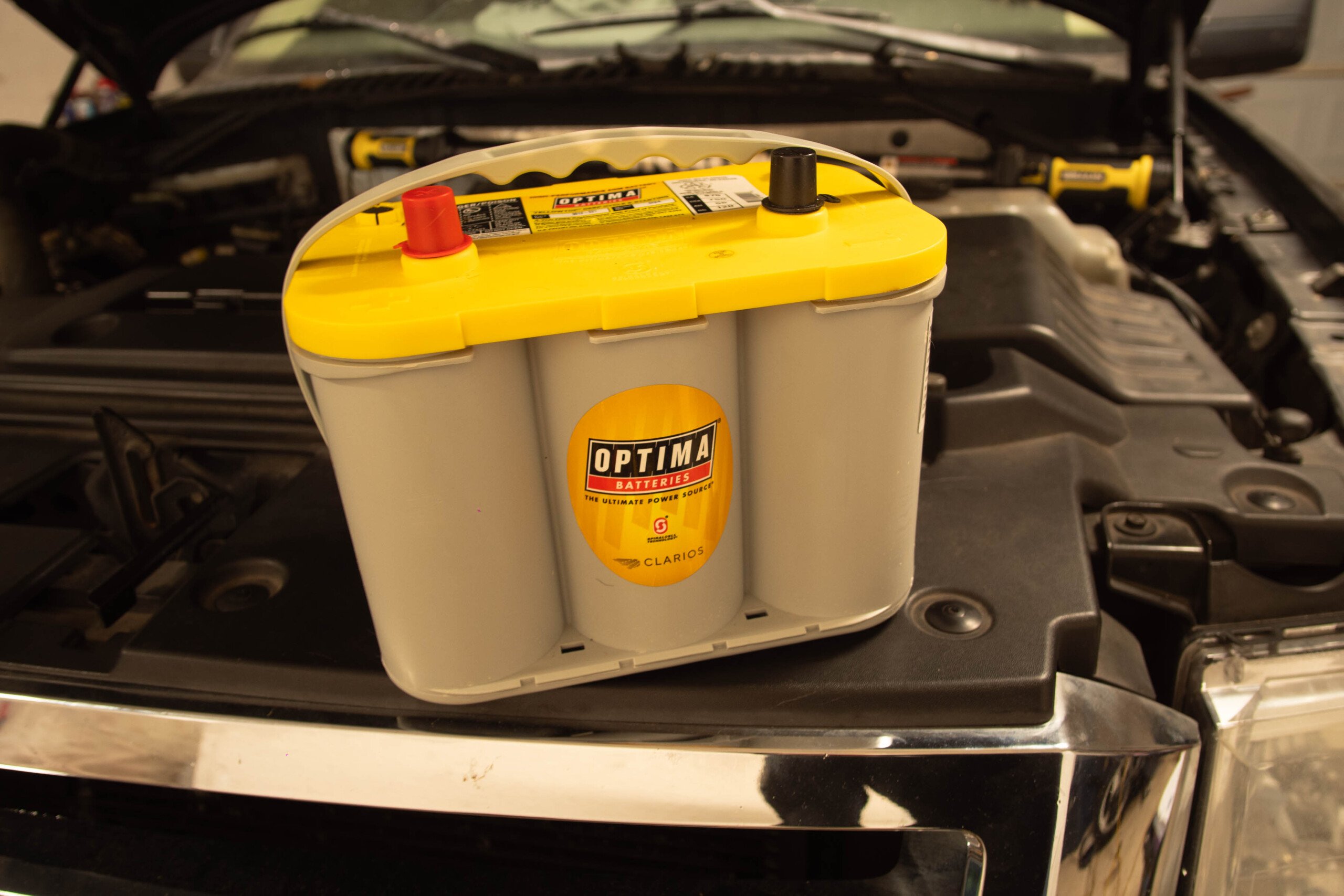An engine is a big air pump. Getting atomized fuel and air in and getting exhaust gasses out is the basic principal of how an engine works. A rhythmic pattern of opening and closing the valves, allowing air in and exhaust out, is what keeps the engine operating effectively enough to be useful. Controlling the timing of these valve events is what determines how much power or torque an engine will produce and exactly where in the RPM range horsepower and torque will peak. The camshaft is used to control the timing of valve events – it’s like the part of the human brain that controls heartbeat and respiration. Understanding the basics of camshaft terminology is the first step to selecting the right cam for your application.
THE BASICS
When you’re talking about camshafts, you’ll hear terms like “lift,” “duration,” and “separation.” Understanding these terms is key to having a meaningful discussion about cams, since every aspect of valve operation stems from these basic concepts. You have to learn to crawl before you can walk, so let’s start with the key terms.

The camshaft controls the timing of valve opening and closing. The shape, size, and angle of the lobes determine how the engine breathes.
Common Camshaft Terms:
- Base Circle: The lowest part of the cam lobe, where the valve is closed and resting on the seat.
- Duration: how long the valves stay open, measured in degrees of camshaft rotation.
- Lobe Separation: The relationship between the centerline of the intake and exhaust lobes in degrees.
- Lift: The distance the lifter moves from the cam base circle or the valve is lifted off the valve seat, measured in thousandths of an inch.
- Valve Overlap: The period when both the exhaust and intake valves on the same cylinder are open at the same time, shown in degrees.

“Valve Lift” refers to the distance the valve moves off its seat. Maximum allowable lift is typically limited by interference issues with the piston crown.
LIFT
“Lift” refers to the distance the lifter or valve is moving, and there are three terms that you will commonly hear: Cam lift, Gross Valve Lift, and Net Valve Lift. Cam Lift is the maximum distance the cam will move the lifter above the base circle of the camshaft. For example, a camshaft might have .350 inch lift. Gross Valve Lift is the cam lift multiplied by your rocker arm ratio. If you had a 1.6-ratio rocker, your .350 inch lift camshaft would produce .560-inch of gross valve lift. Net Valve Lift is the gross valve lift minus the valve lash that you set for a mechanical (solid lifter) camshaft. For example, if you are running .020 of valve lash, your Net Valve Lift in the previous example would be .540-inch (0.350 times 1.6, minus 0.020).
More lift means more space between the valve and the seat, and more airflow, but the maximum amount of lift possible at the valve is usually limited by potential contact between the valve and piston. Even if it was possible to run however much lift you wanted to, though, the question of how much lift is usable before any further increase fails to yield any power gains is difficult to answer without taking into consideration several other factors. Fortunately, there is help. COMP Cams provides free software on their website which is downloadable and easy to use. Cam Quest 6 is an easy to use interface that covers just about any engine combination imaginable.

The lifter follows the face of the camshaft, and the “duration” of a cam is measured from where the lifter begins to move upward on the opening ramp to where it returns to rest on the closing ramp.
DURATION
“Duration” refers to the total angle in camshaft degrees that a valve is held open. This determines what the power range will be. You’ll often see references to two ways of measuring duration; duration “at fifty,” and “advertised duration.” Duration “at fifty” is measured in crank degrees from the point where the lifter rises .050” from the base circle on the opening side of the cam lobe to the point on the closing side of the lobe where the lifter drops to .050” from the base circle. “Advertised Duration” simply refers to the total duration of the camshaft measured at any point above the base circle, from the opening side of the cam lobe to the closing side. This can vary from manufacturer to manufacturer, so duration at .050 is the most common way of comparing different camshaft lobes.
LOBE SEPARATION
The third vital cam statistic is lobe separation. This is the actual spacing of the intake and exhaust lobe centerlines from each other for the same cylinder. For the typical pushrod V8 engine with a single camshaft, this is a fixed angle ground into the camshaft when it is manufactured. Engines with separate intake and exhaust cams, like the four-valve Ford “Modular” V8, can alter lobe separation through the use of adjustable cam gears, but for single-cam engines, it’s set once and forever by the design of the camshaft.
Lift, duration, and lobe separation all play important roles in how a camshaft profile performs. More lift usually means more potential flow at high RPM, but too much can make an engine “lazy” down low because of poor intake and exhaust velocity. Adding duration is a common practice for making more top end power but once again there is a trade off in reducing low end output. Changing the lobe separation effects the amount of maximum torque, what RPM range it falls into, and the width of the power band . David McCarver, senior engine builder at COMP Cams, adds, “The more specifics you can define, the easier it will be to make a cam selection to suit your needs. You need to integrate the cam into the whole engine-package – displacement, compression ratio, heads, intake manifold, headers and fuel system, and carburetor or fuel injection.”

There are four basic types of camshafts to select from, and the type will determine what lobe designs can be used, as well as how much maintenance the valvetrain will require.
Camshaft Type Selection
Cams can be broken into four basic types, based on what kind of lifters they’re designed to work with. Flat tappet cams use lifters (also called tappets, naturally enough) with flat faces that ride directly on the surface of the cam lobes. Roller cams have lifters with (you guessed it!) roller bearings on the tips that contact the camshaft. While roller lifters can follow more radical cam profiles and offer less friction than flat tappets, they also have more mass and complexity. The other distinction is between “mechanical” lifters with solid machined bodies that transmit motion directly from the tappet face to the pushrod, and hydraulic lifters that use an internal piston supported by oil pressure to take out any slack (known as “lash”) in the valvetrain. Because there must be a provision for a little bit of lash to accommodate expansion, solid lifter valvetrains need adjustment periodically to account for wear. Hydraulic camshafts don’t need this attention, but again, the lifters are heavier and more complicated, and the pistons can “pump up” or stick, causing the valves to not seat properly or not open all the way.
By combining roller or flat, hydraulic or solid, you come up with the four basic types of camshafts. Out of the four, the Hydraulic Flat Tappet camshaft has been the standard for over 40 years. It’s success and popularity is due because it is inexpensive, requires very little routine maintenance and makes good power.

Flat Tappet camshafts have a sharper pointed nose on each lobe.
Flat Tappet Mechanical camshafts were born out of the muscle car era where valve train technology blossomed. Like the hydraulic flat tappet camshaft, the mechanical flat tappet camshaft is also a low cost unit but can make more power than the hydraulic flat tappet cam. It does require more maintenance than the hydraulic cam however, and routine adjustment of the valve lash.
Hydraulic Roller camshafts are more expensive than flat tappet camshafts but can make even more power than the mechanical flat tappet cams. In addition to lower friction, a steeper ramp can be manufactured into the cam lobe for greater duration. The hydraulic roller camshaft also requires no break in, unlike the critical process required for flat tappet camshafts. As an added bonus, these cams offer the best durability of the different types of camshafts.

Roller Camshafts have steeper ramps with a flatter nose on each lobe.
Mechanical Roller camshafts are on par with the hydraulic roller camshafts price-wise and are often considered the ultimate in power. They also have steeper cam ramps and longer duration than flat tappet camshafts. Like the mechanical flat tappet camshafts, these require routine maintenance to keep them operating properly.

Camshafts are a complicated topic, but knowing the basics will help you when you consult with the experts.
HELP IN SELECTING A CAMSHAFT
COMP Cams’ David McCarver reminded us that the COMP tech line stands ready to assist in picking out a cam. “We consider present performance of the vehicle and determine cam type on what goals the driver wants to achieve,” he explains. The tech line is operated by a well-trained staff of engine builders, racers, and cam grinders. Taking advantage of their experience is made easier when you understand the basics of camshaft terminology, but remember that nobody expects you to be an expert. Ask questions when you need to, give as much information about your parts and plans as you can, and get the full benefit of COMP Cams’ vast pool of knowledge and experience.

















